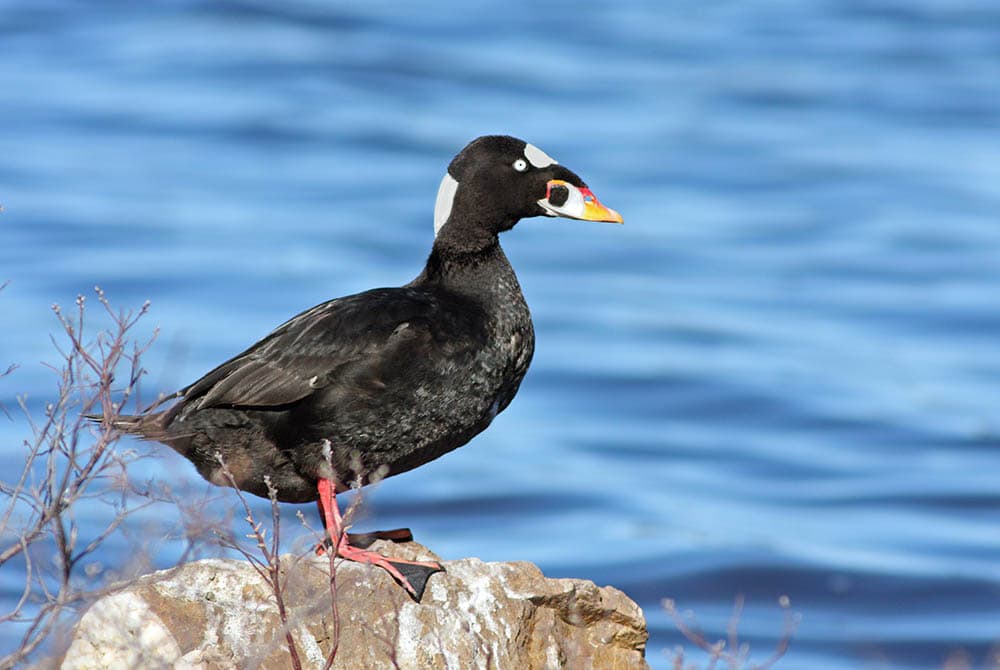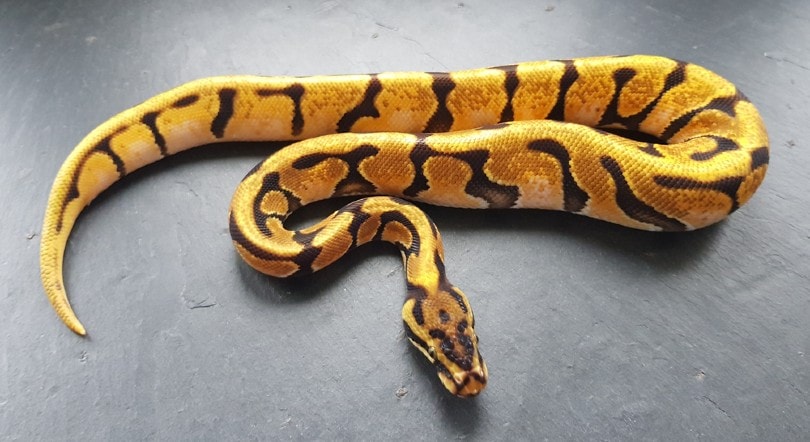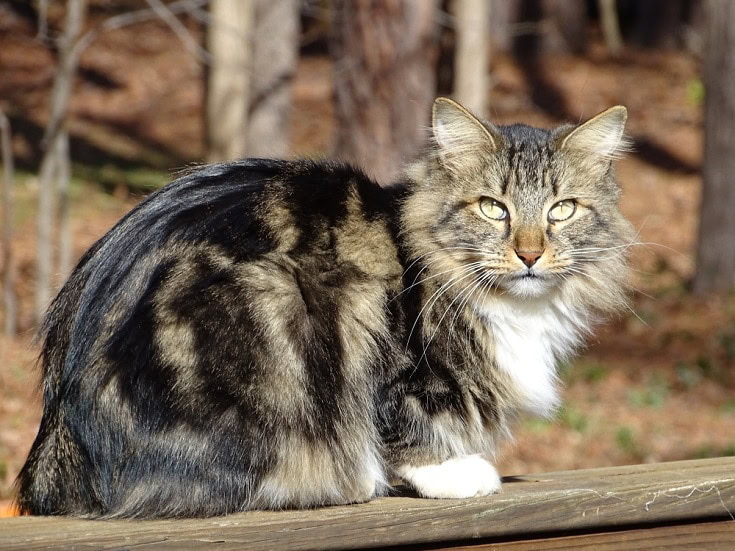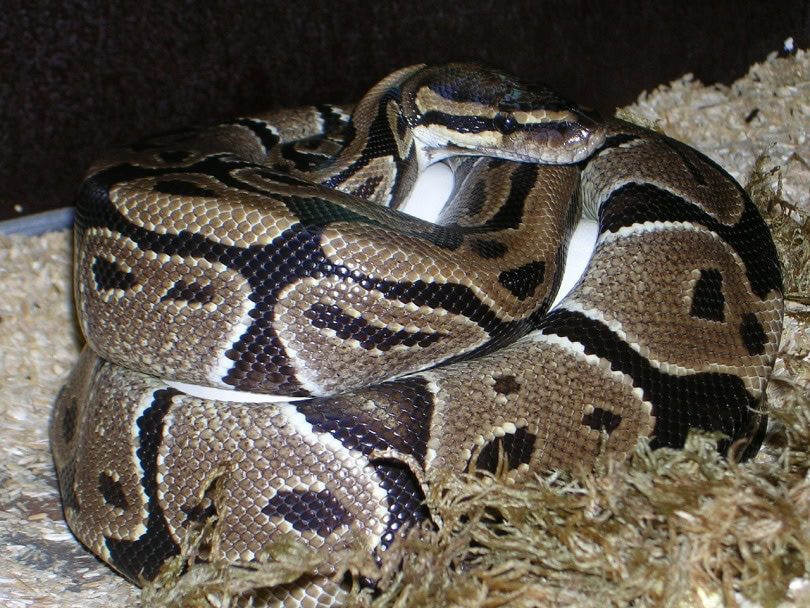While there are many types of ducks in South Carolina, the most common is the diving duck. There are 16 different types of diving ducks in the Palmetto State. They are most often seen in deep and large lakes, rivers, coastal bays, and even inlets.
The species as a whole has a short tail, paddle feet, and colored wing patches. Their diet is mostly aquatic plants, shellfish, fish, and mollusks.
In this article, we tell you all about common diving ducks and where you can see them in South Carolina.

The 16 Most Common Duck Breeds in South Carolina
1. Black Scoter (Melanitta americana)
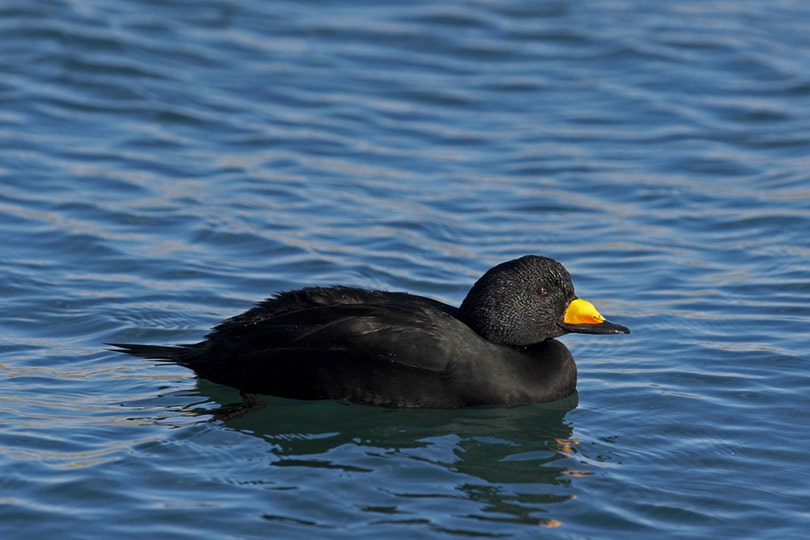
The Black Scoter grows to around 19½ inches and weighs around 2½ pounds on average. This duck is mostly found on the coastal flyways of South Carolina and off the coast during the winter season.
Scoters survive on mostly fish, mollusks, and a bit of vegetation. Their preferred habitat for breeding is shallow lakes, and during the winter season, they tend to stay close to the beaches.
2. Bufflehead (Bucephala albeola)
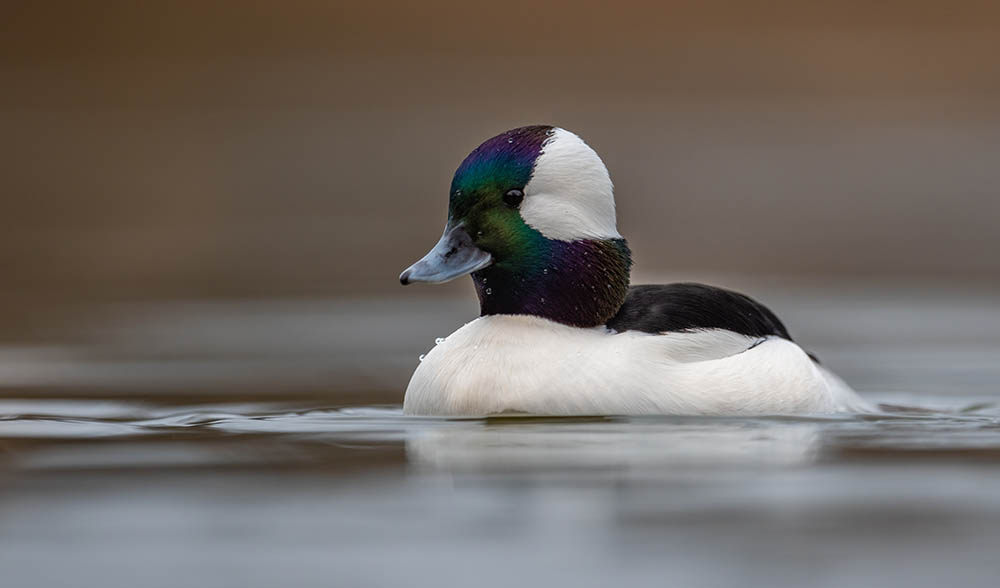
The Bufflehead is very small and has a black and white, bold color pattern. They average 14½ inches in length and weigh around 1 pound. They are found in all flyways and in South Carolina during the winter season.
They live in freshwater ponds and small lakes. In addition, they can be found in saltwater coves and harbors during the winter, among other places. Their food choices include primarily aquatic invertebrates and a few seeds from time to time.
3. Canvas Back (Aythya valisinera)
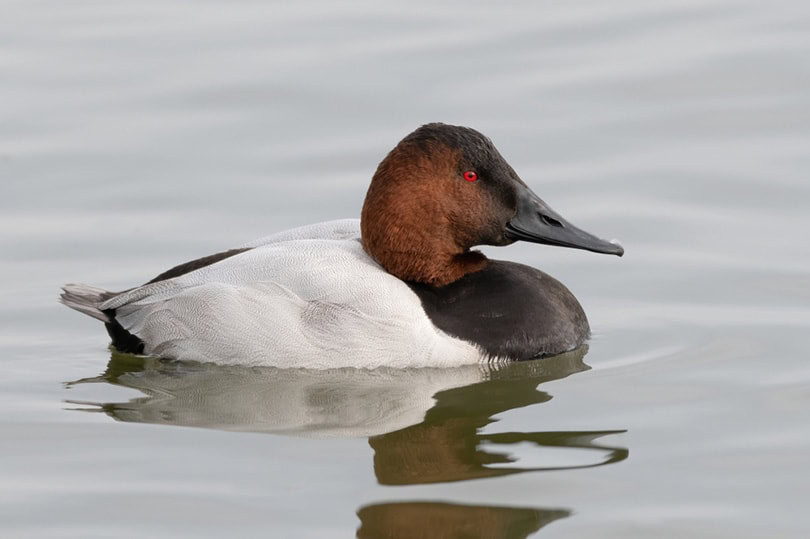
These ducks feature a large body and a sloping profile, which makes them easy to tell from other duck breeds in South Carolina. They have white bodies, rusty heads, and black chests. They average around 22 inches in length and weigh an average of 3 pounds.
They live in all of the flyways but tend to be in South Carolina during the winter season. Their preferred habitat is fresh water in the summer season. In the winter, you can spot them mostly in shallow bays, harbors, and deep freshwater lakes.
Their food choice includes plants and animals during the breeding season. However, in the winter, they tend to stick to plants or the occasional clam when the pickings are slim in the food department.
4. Common Eider (Somateria mollissima)
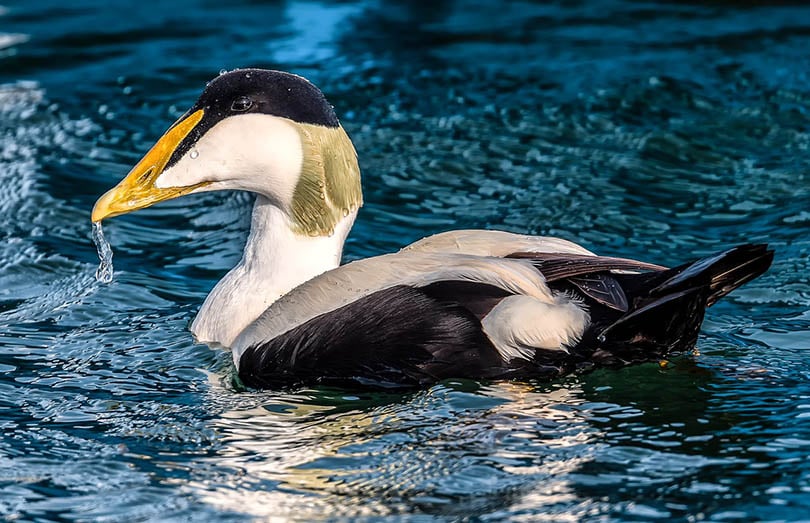
The Common Eiders feature bold black and white coloring with wedge-shaped heads that are distinctive. In addition, they have long bills and thick necks. Their average length is 23½ inches, and they weigh around 5 pounds.
They tend to populate the Alaskan coast and New England. They are rare to see in South Carolina but have been spotted before. Their preferred habitat is coastal islands and low-lying inlets when they are in the breeding season. However, in winter, they can be found in outer coastal areas instead.
Their food choices are primarily mollusks and other benthic invertebrates.
5. Common Merganser (Mergus merganser)
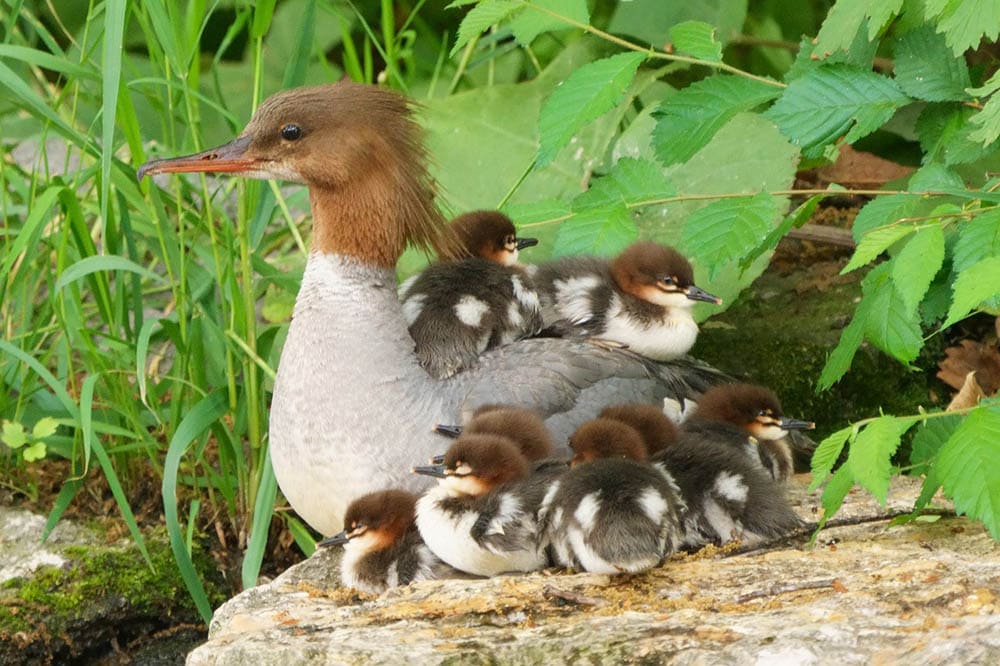
The Common Merganser is one of the largest of South Carolina’s duck population. It’s white with a green head and a very sharp, red bill. It grows around 25½ inches lengthwise and weighs about 2½ pounds.
These ducks are spotted most often in all flyways. Their preferred habitat during the breeding season is lakes and rivers that are bordered by mature forests. But they rarely visit South Carolina during the winter season. In the winter, they prefer to be in freshwater lakes.
Their food choices lean toward small fish, but they will also eat frogs, plants, and small mammals.
6. Common Goldeneye (Bucephala clangula)
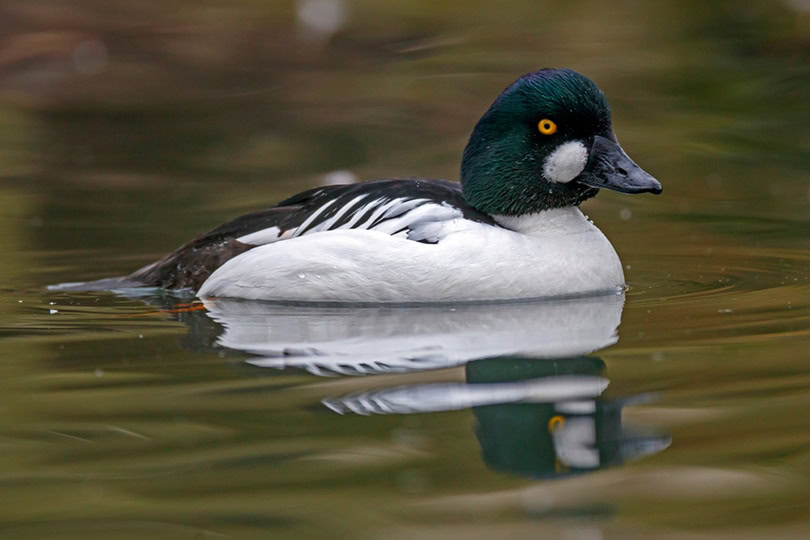
The Common Goldeneye is a duck of medium size. You can recognize it easily by its black head and back and by the white patch it has on its cheeks. It can grow to around 19 inches long and weigh in at an average of 2¼ pounds.
This breed can be found in all four flyways, but it tends to visit South Carolina during the winter season. Its preferred habitat is flying south late in the season and spending the winters hanging out in coastal waters and lakes.
Its food choices include fish, spawn, and vegetation, but it prefers aquatic invertebrates.
7. Greater Scaup (Aythya marila)
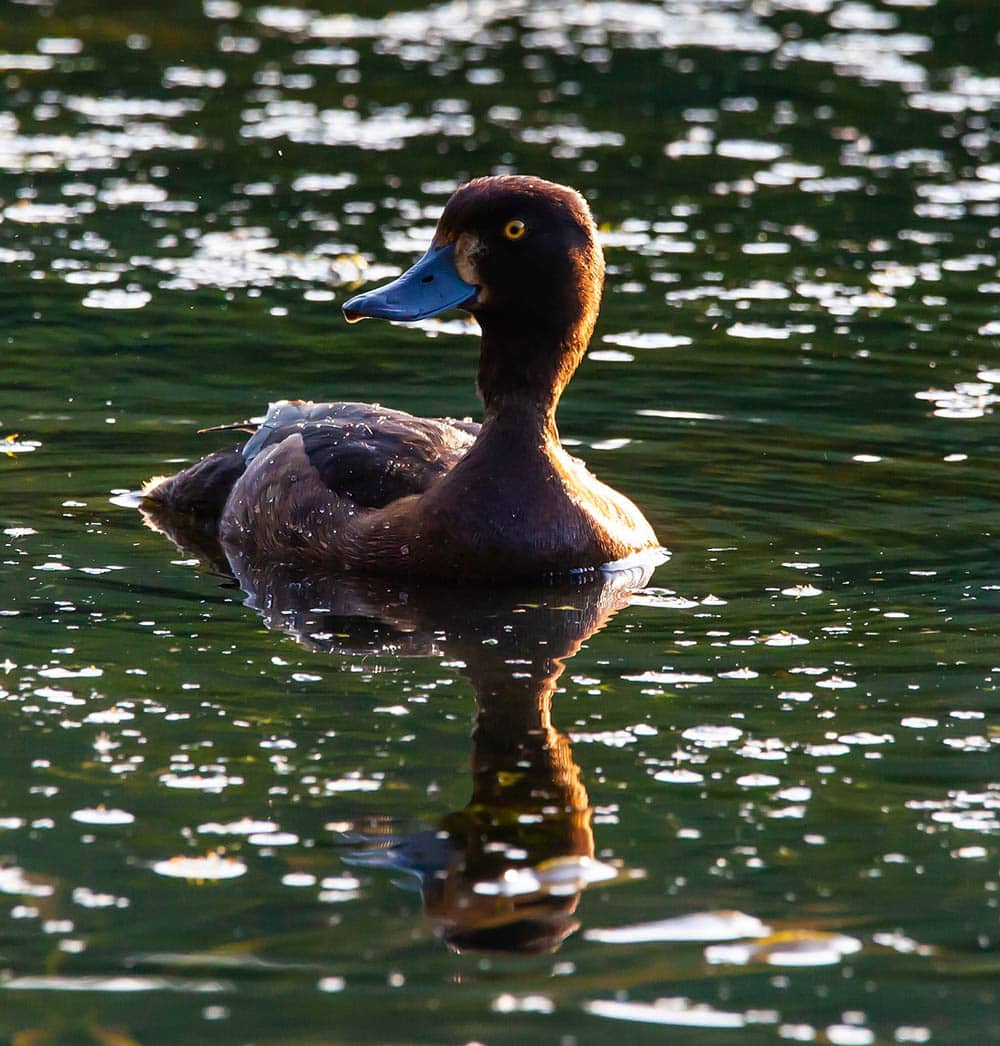
The Greater Scaup is larger than the Lesser Scaup and has a light band near its trailing wings. These ducks grow to around 18½ inches in length and weigh in at around 2 pounds.
This breed is most often found in coastal flyways but can also be found in all flyways. It’s found on the coast of South Carolina, but only in the winter. Its preferred habitat is lakes, inlets, and bays. However, in the winter, these ducks settle exclusively in marine habitats instead.
Foodwise, they eat a quite varied diet, according to the season they’re in at the time and what’s available to them.
8. Harlequin Duck (Histrionicus histrionicus)
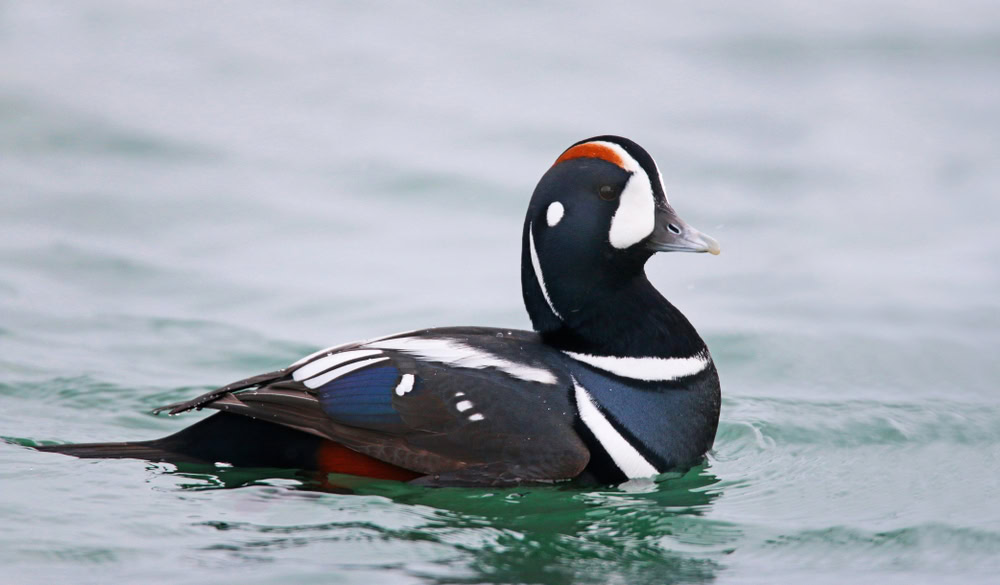
The Harlequin Duck is a glossy, slate blue duck with white stripes and spots. It reaches an average of 17 inches in length and weighs around 1½ pounds.
This breed can be found north of New Jersey and San Francisco. However, it is rare in South Carolina, and little is known about its eating habits.
9. Hooded Merganser (Lophodytes cucullatus)
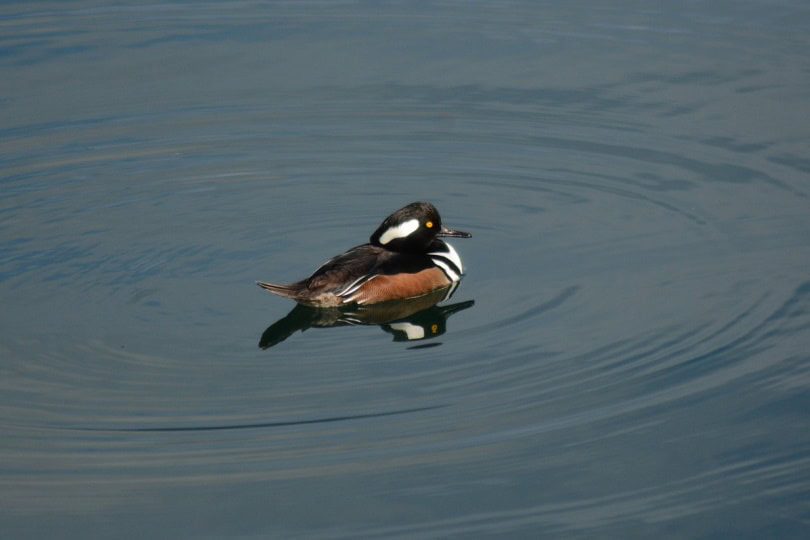
The Hooded Merganser features a bold black-and-white pattern and an exaggerated crest. It averages 18 inches in length and weighs about 1½ pounds.
Found in all flyways, these ducks are mostly found in South Carolina during the winter, though some choose to stay there year-round. They prefer forested wetlands, but in the winter months, they tend to flock to shallow freshwater instead.
The average range for these ducks tends to range from fish to aquatic insects.
10. Long-Tailed Duck (Clanguta hyemalis)
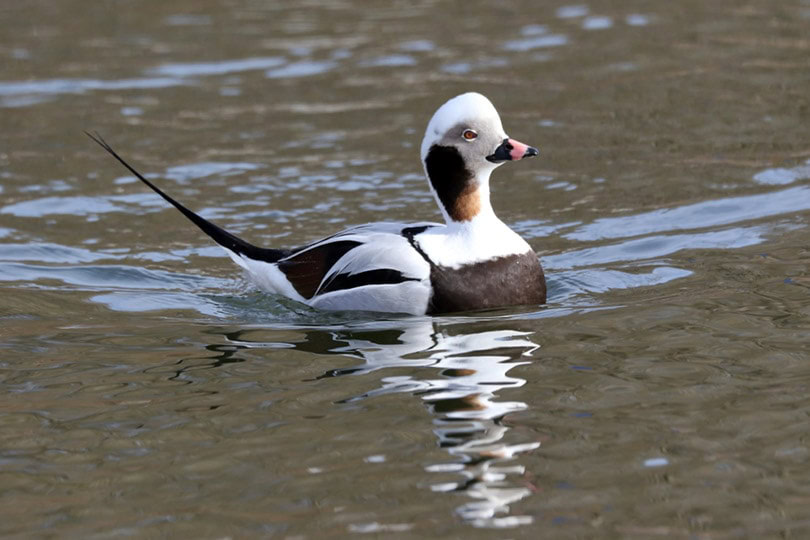
The Long-Tailed Duck is a sea duck with a slim appearance and bright plumage. Its tail feathers are extremely long, so it should be easy to spot. The duck averages 20½ inches in length and weighs about 2 pounds.
This breed is found in all flyways but is most often seen on the coast. Although it has been spotted, it is extremely rare to see in South Carolina during the winter season. It’s most often found in large freshwater lakes during the winter and frequents subarctic wetlands in the summer.
Its main food is of the animal variety, but it’s all according to where it is and what it can find.
11. Red-Breasted Merganser (Mergus serrator)
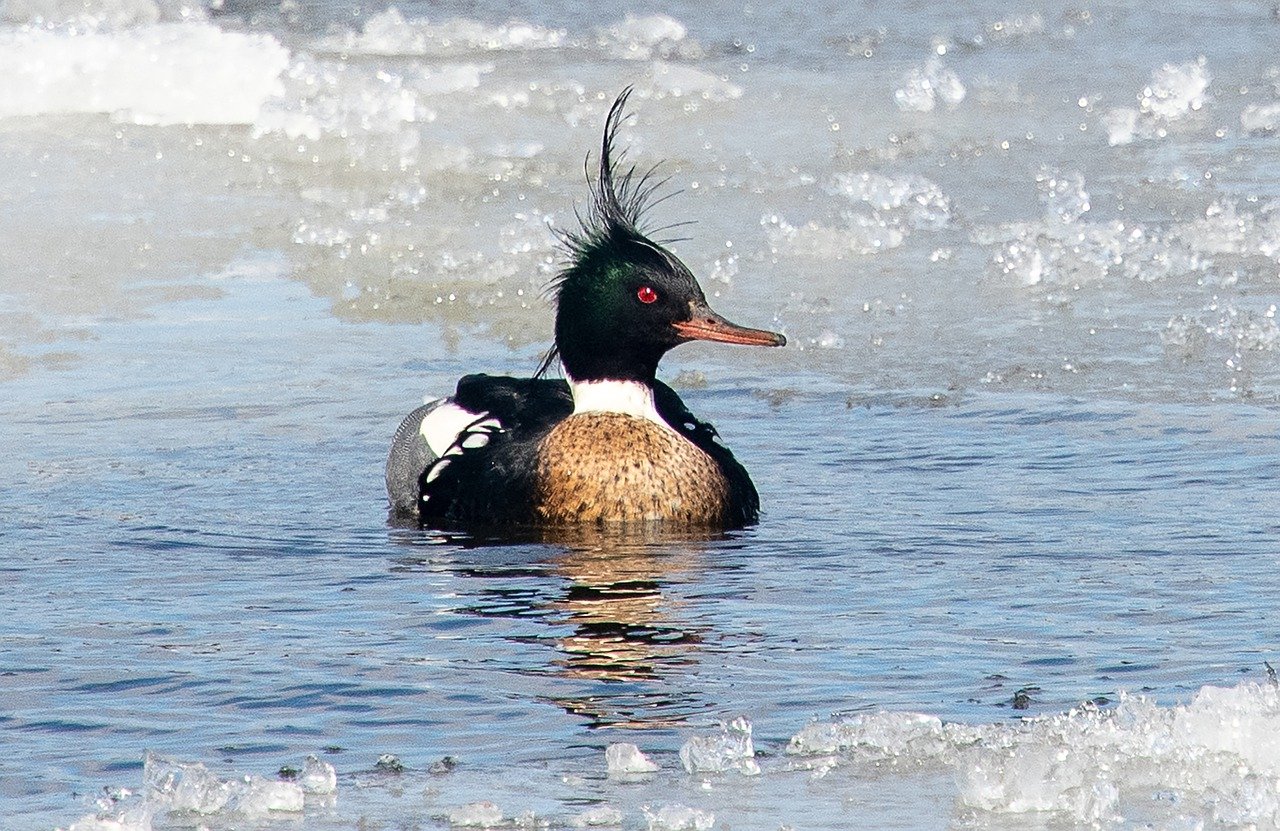
The Red-Breasted Merganser is a large duck that has a green head and a reddish bill that is long and thin. It averages 23 inches in length and weighs about 2½ pounds.
These ducks are most often found in the northern Atlantic flyway but can flock to all four. They usually spend the winter on the South Carolina coast. This breed will summer in the brackish, fresh, or saltwater wetlands but will spend the winter in secluded bays.
The main food source for the Red-Breasted Merganser includes small fish. However, it will dine on insects, worms, and even amphibians on occasion.
12. Redhead (Aythya americana)
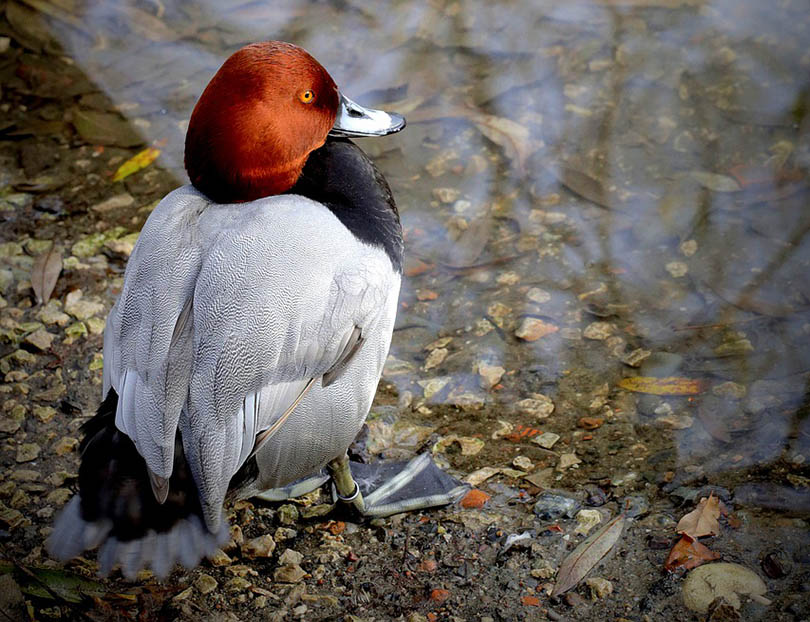
The Redhead Duck is aptly named because of its round, red head. It also has a blue bill that’s tipped in black. Growing to around 20 inches in length, this breed weighs around 2½ pounds on average.
Redheads are found from one coast to the other, with most of them being found in the coastal flyway. They venture into South Carolina for the winter season. Their preferred habitat is the wetlands in the summer months and low-lying coastal ecosystems during the long, hard winters.
They eat vegetables and tubers from aquatic plants during the breeding season but will also eat seeds. During the winter, they are known to dine on saltwater mollusks and plants.
13. Ring-Necked Duck (Aythya collaris)

The Ring-Necked Duck is similar to the Scaup Duck. However, it has dark wings that are different from those of the Scaup Duck. They grow to an average length of around 17 inches and weigh approximately 2½ pounds.
This breed can be found in all of the four flyways but is most commonly spotted in the Mississippi and Central flyways instead. It’s happy to flock to South Carolina in the winter season, however. These ducks like the wetlands during the summer season, and in the winter, they tend to flock to marshes, swamps, and other freshwater areas.
They prefer to feast on tubers, aquatic invertebrates, and plant seeds. Although, during the breeding season, they prefer to increase their intake of animal food.
14. Ruddy Duck (Oxyura jamaicensis)
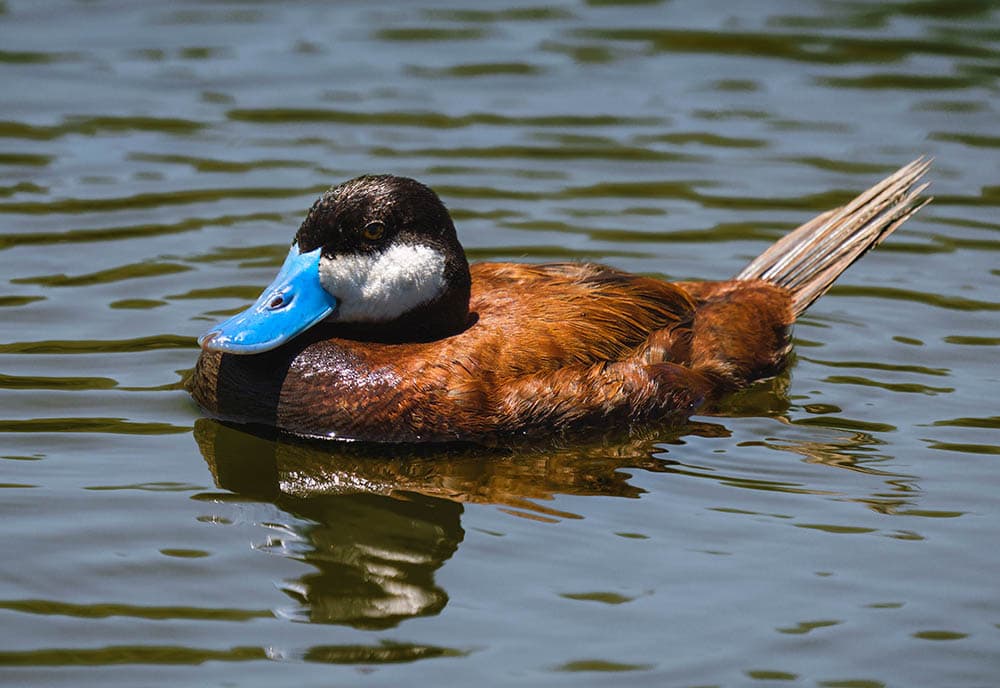
The Ruddy Duck has a thick neck and a compact body. It also has white cheeks, a bright blue bill, and a tail that has been known to stand upright on occasion. This breed reaches an average length of 15½ inches and weighs in at around 1½ pounds.
Found in every flyway, these ducks are most often found in the Atlantic and Pacific. However, they tend to make South Carolina their home during the winter. They prefer large marsh systems when breeding and fresh, brackish coastal bays the rest of the year, though they will stay in the marshes too.
This breed mainly eats aquatic insects and the like, though it will occasionally snack on vegetation and seeds.
15. Surf Scoter (Melanitta perspicillata)
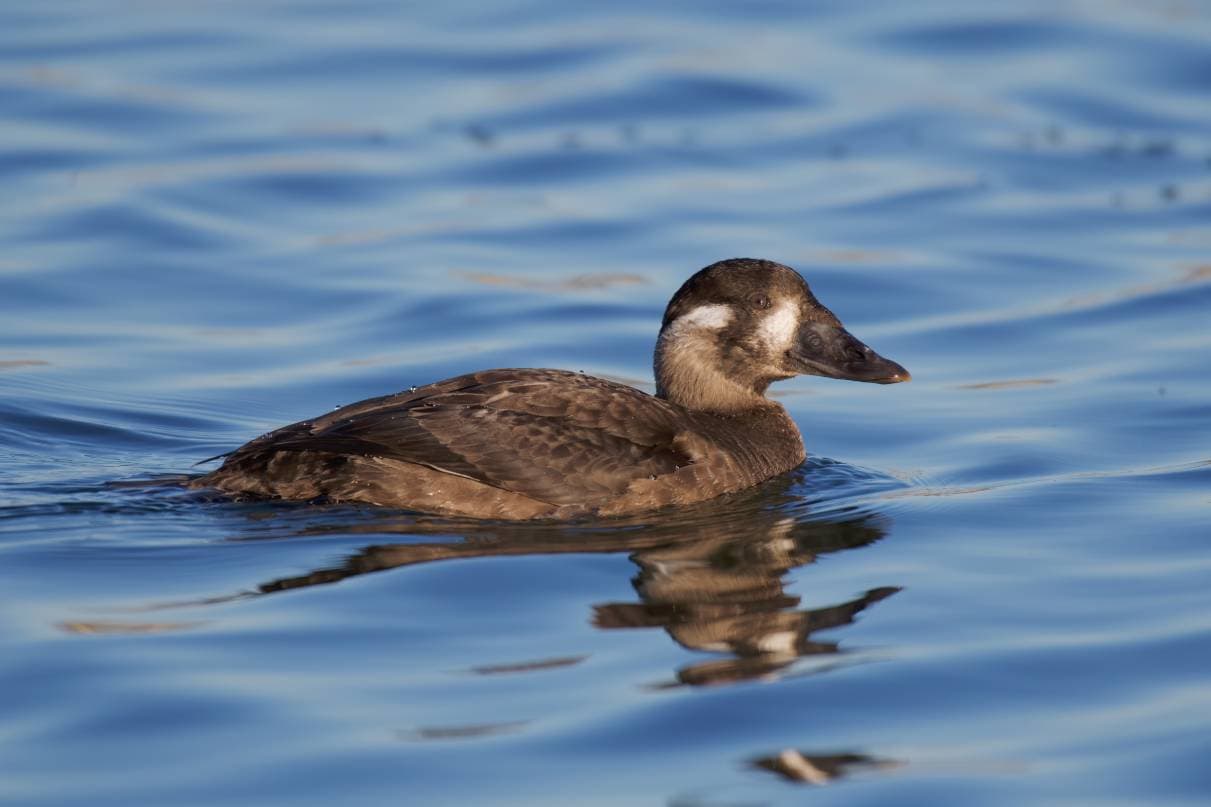
The Surf Scorter grows to an average length of 19½ inches and weighs about 2 pounds. This breed can be found in all flyways, but it commonly hangs out on the coasts and winters in South Carolina.
Its habitats are shallow lakes during the breeding season and shallow marine waters to wait out the winter of the year.
Food for the Surf Scoter includes mostly mollusks during the winter season and aquatic invertebrates in the summer months. It will also dine on herring eggs when it can find them.
16. White Winged Scoter (Melanitta deglandi)
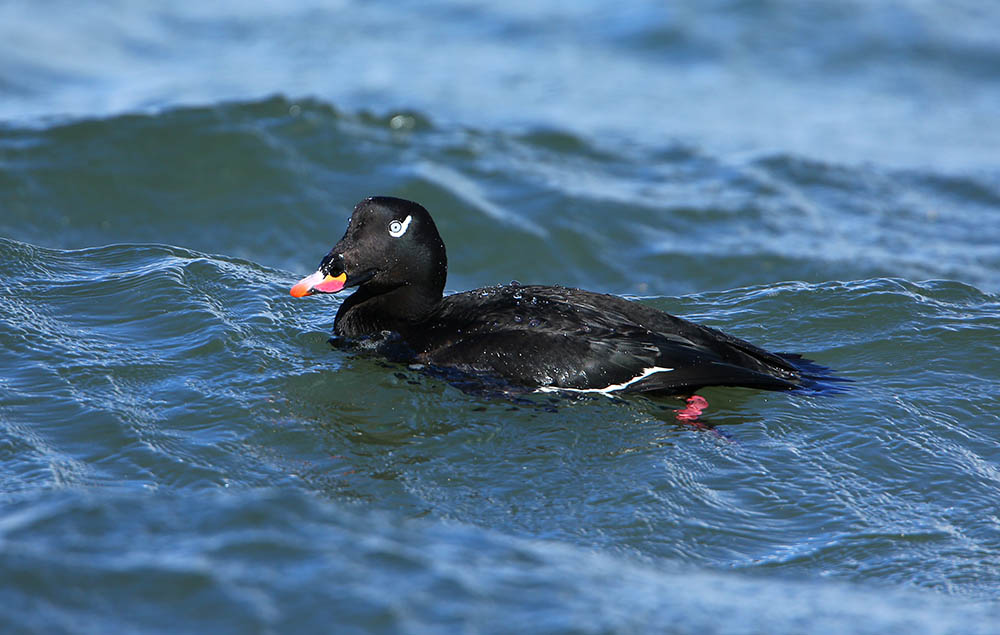
The White Winged Scoter is one of the heaviest and largest breeds of ducks. It reaches an average length of 21½ inches and weighs about 3½ pounds.
This breed is most often found on the coast but can be found in all four flyways. It is also found on the coast of South Carolina during the winter season. In the summer, these ducks like to live in freshwater ponds, and in the winter, they prefer bays and open coastlines with shallow water available.
The White Winged Scoter eats fish and aquatic plants every now and then but prefers to dine on insects and marine mollusks.

Final Thoughts
Although there are quite a few types of ducks out there, diving ducks are what you’ll mostly find in South Carolina. Some are only seen rarely here, but others visit the Palmetto State every winter and hang around the coast until the summer sun once again warms the earth.
So, now, if you’re walking along a water’s edge on a fine winter’s day, you’ll be able to point out these ducks to your friends and family!
Featured Image Credit: Mircea Costina, Shutterstock
Contents
- The 16 Most Common Duck Breeds in South Carolina
- 1. Black Scoter (Melanitta americana)
- 2. Bufflehead (Bucephala albeola)
- 3. Canvas Back (Aythya valisinera)
- 4. Common Eider (Somateria mollissima)
- 5. Common Merganser (Mergus merganser)
- 6. Common Goldeneye (Bucephala clangula)
- 7. Greater Scaup (Aythya marila)
- 8. Harlequin Duck (Histrionicus histrionicus)
- 9. Hooded Merganser (Lophodytes cucullatus)
- 10. Long-Tailed Duck (Clanguta hyemalis)
- 11. Red-Breasted Merganser (Mergus serrator)
- 12. Redhead (Aythya americana)
- 13. Ring-Necked Duck (Aythya collaris)
- 14. Ruddy Duck (Oxyura jamaicensis)
- 15. Surf Scoter (Melanitta perspicillata)
- 16. White Winged Scoter (Melanitta deglandi)
- Final Thoughts
